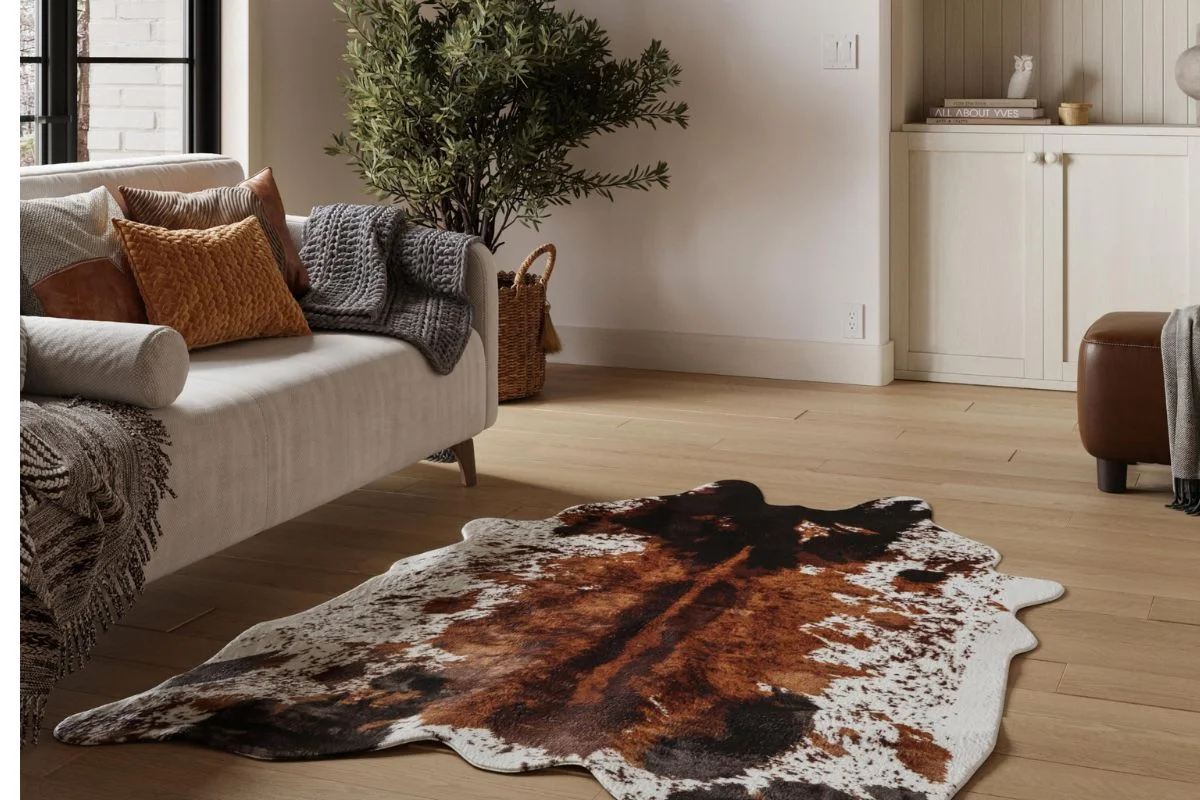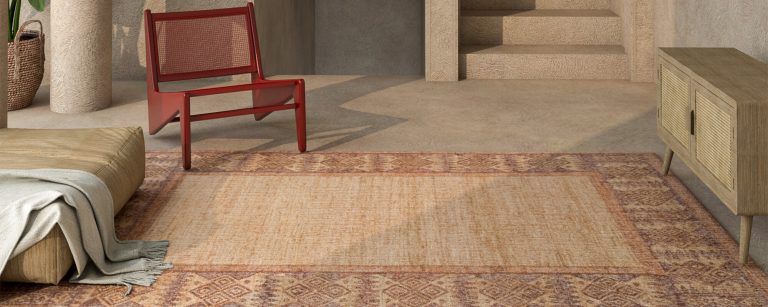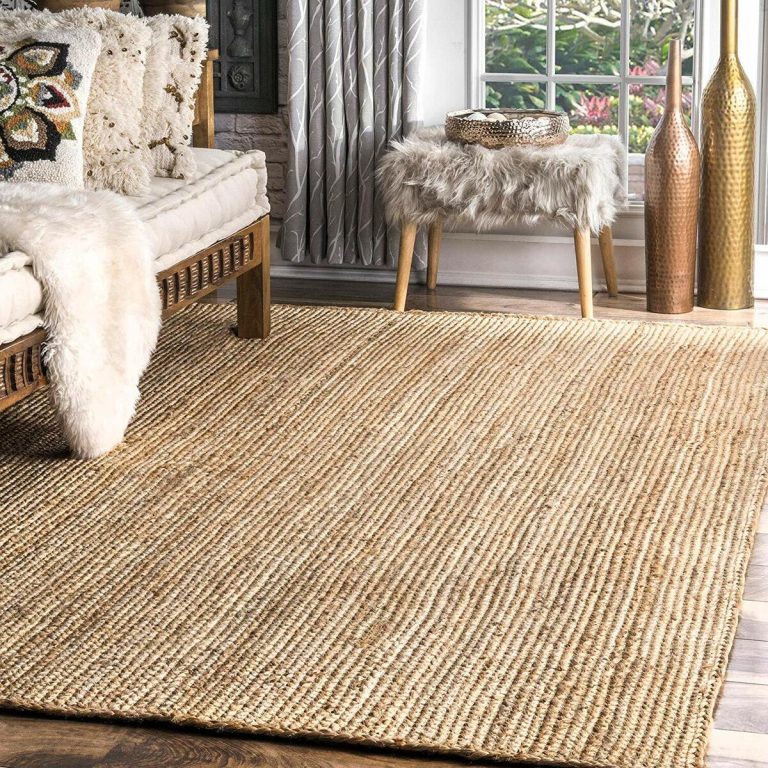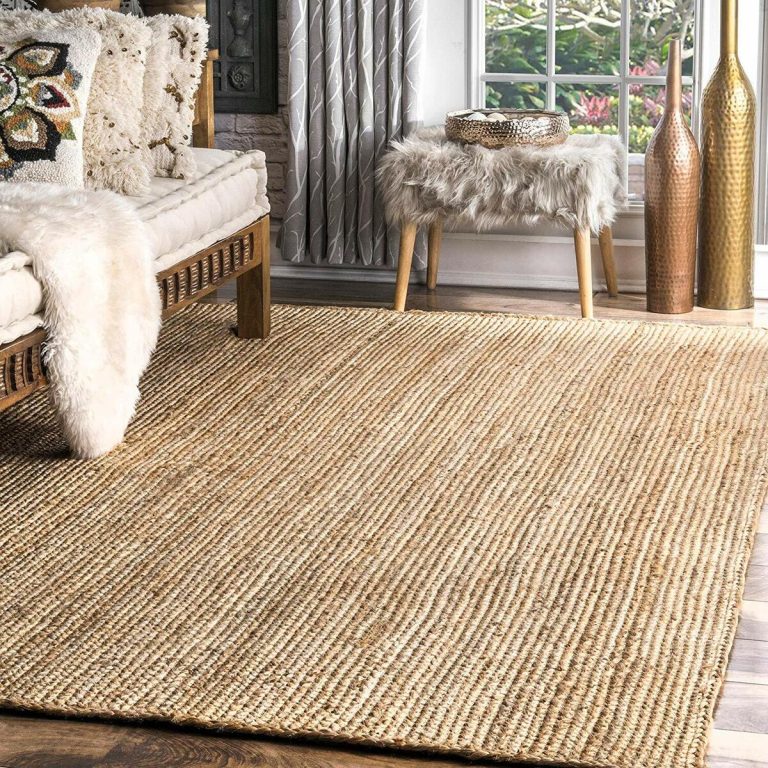Selecting the perfect cowhide rug for your home can be a transformative experience, elevating your interior design and adding a touch of natural elegance to any space. Cowhide rugs are celebrated for their unique patterns, durability, and versatility, making them a popular choice among homeowners and interior decorators alike.
In this guide, we’ll explore the essential tips and considerations to keep in mind when choosing the right cowhide rug for your home. From understanding the different types of cowhide to considering factors such as size, color, and placement, we’ll provide valuable insights to help you make an informed decision that aligns with your aesthetic preferences and lifestyle needs.
Whether you’re looking to add warmth to a rustic farmhouse setting, create a focal point in a contemporary living room, or enhance the cozy ambiance of a cozy bedroom retreat, a cowhide rug can be the perfect accent piece to tie your décor together.

Brief overview of cowhide rugs and their popularity in interior design
Cowhide rugs have surged in popularity in interior design circles, capturing the attention of homeowners, designers, and decorators alike. These rugs are crafted from the natural hides of cows, which are meticulously processed and treated to create unique floor coverings that exude rustic charm and timeless elegance.
The appeal of cowhide rugs lies in their natural beauty and versatility. Each rug boasts its own distinct patterns, markings, and hues, making it a one-of-a-kind addition to any space. From the classic black and white speckled designs to the rich tones of brown and tan, cowhide rugs effortlessly complement a wide range of interior styles, from traditional to contemporary.
One of the key factors driving the popularity of cowhide rugs is their ability to add warmth, texture, and visual interest to any room. Whether used as a focal point in a living room, draped over a chair or ottoman, or layered on top of existing carpeting, cowhide rugs make a striking statement that elevates the overall aesthetic of the space.
Moreover, cowhide rugs are prized for their durability and resilience, making them suitable for high-traffic areas such as living rooms, entryways, and dining rooms. Unlike synthetic rugs, cowhide rugs are resistant to shedding and fading, ensuring that they retain their beauty and luster for years to come.
Another factor contributing to the popularity of cowhide rugs is their eco-friendly appeal. Made from natural materials and produced using traditional methods, cowhide rugs are a sustainable choice for environmentally conscious consumers. By repurposing the hides of cows that are raised for meat production, cowhide rugs offer a unique blend of style and sustainability that resonates with modern sensibilities.
In summary, cowhide rugs have earned their place as a staple in interior design, offering a timeless combination of beauty, durability, and eco-friendliness. With their natural charm and versatility, cowhide rugs continue to captivate homeowners and designers alike, adding a touch of rustic elegance to any living space.
Characteristics and Natural Beauty of Cowhide Rugs
Every cowhide rug tells its own story. The most striking feature is its unique pattern—no two rugs are identical. Natural markings, color variations, and distinctive shapes make each rug a one-of-a-kind piece. Available in a wide range of shades—black, brown, white, brindle, and tricolor—cowhide rugs complement various color palettes and interior styles.
The texture of cowhide is soft yet durable, providing a comfortable surface that feels luxurious underfoot. Unlike synthetic alternatives, real cowhide maintains a natural sheen that adds depth and elegance to any room. The organic patterns blend seamlessly with wood, metal, leather, or stone furnishings.
Beyond appearance, cowhide rugs are practical and long-lasting. They resist wear and tear, even in high-traffic areas, thanks to the strength of natural leather fibers. The natural oils present in the hide protect against spills and dust, making cleaning effortless.
Moreover, cowhide rugs embody the beauty of imperfection. Each scar or mark on the hide tells a story of the animal’s life, contributing to its authenticity and charm. This natural uniqueness enhances the aesthetic appeal of spaces, creating a genuine connection between nature and interior design.
Types and Styles of Cowhide Rugs
Cowhide rugs come in a variety of styles to suit every interior design preference. The natural cowhide rug remains the most popular, showcasing organic patterns and colors that highlight the hide’s natural beauty. These rugs often feature classic black-and-white or brown-and-white combinations, ideal for rustic or Scandinavian décor.
Dyed cowhide rugs offer bold and creative options. They can be colored in vibrant shades such as gold, silver, blue, or red to match modern interiors. Metallic finishes add glamour and a contemporary edge, making them perfect for luxury living spaces.
Patchwork cowhide rugs combine pieces of different hides sewn together into geometric patterns, such as chevron, square, or diamond designs. These rugs provide a modern twist while retaining the natural charm of leather.
Printed cowhide rugs replicate exotic animal patterns like zebra, leopard, or tiger prints, giving a dramatic and stylish look without harming endangered species.
With so many styles available, cowhide rugs offer versatility in interior decoration—whether you seek natural elegance, modern sophistication, or artistic flair.
Benefits of Cowhide Rugs in Home Décor
Cowhide rugs offer both aesthetic and practical benefits. First, they add natural warmth and texture to interiors. Their organic appearance complements any design—from farmhouse rustic to sleek contemporary—instantly elevating a room’s style.
Their durability is another major advantage. Cowhide rugs are resistant to spills, stains, and foot traffic. The natural oils in the hide act as a protective layer, ensuring longevity even in busy areas.
Cowhide is also hypoallergenic, unlike synthetic carpets that trap dust and allergens. This makes it a healthy choice for people with allergies or respiratory sensitivities.
Additionally, these rugs are easy to maintain. Simple shaking, vacuuming, or spot cleaning with a damp cloth is usually enough to keep them looking new. They don’t shed fibers or require professional cleaning.
Cowhide rugs are also eco-friendly since they are a byproduct of the meat industry. Choosing them supports sustainability and reduces waste.
Finally, they can be used in multiple ways—on floors, draped over furniture, or hung on walls—offering creative versatility that enhances any space.
How to Choose the Perfect Cowhide Rug
Selecting the right cowhide rug involves considering several factors: size, color, pattern, and room placement. Start by measuring the area where the rug will be placed. A small hide can accent a reading nook or hallway, while a large one serves as a centerpiece in a living room.
Color selection depends on your décor theme. Neutral tones like brown, beige, or black complement minimalist interiors, while bold prints or metallic finishes suit contemporary spaces. Each hide’s natural pattern adds depth and character, so choose one that harmonizes with existing furniture.
Texture is equally important. Premium hides should feel soft, supple, and glossy. Avoid rugs that feel stiff or brittle, as this may indicate poor tanning quality.
Lastly, consider the origin. Brazilian cowhides are renowned for their superior quality and craftsmanship. Authentic hides last longer and maintain their beauty over time.
Choosing a cowhide rug is not only about aesthetics but also about selecting a durable, sustainable piece that reflects your personal style and enhances your home’s comfort and appeal.
Maintenance and Cleaning Tips
Cowhide rugs require minimal maintenance but proper care ensures long-lasting beauty. Regularly shake the rug outdoors to remove dust and debris. Use a soft brush or vacuum (with a brush attachment) to keep the hair smooth and clean.
For spills, blot the area immediately with a dry cloth—avoid rubbing, as this spreads the stain. For tougher spots, use mild soap and water, gently cleaning in the direction of the hair. Never soak the rug or use harsh chemicals.
Keep cowhide rugs away from excessive moisture or direct sunlight to prevent fading or curling. Rotate the rug occasionally to maintain even wear.
If the hide becomes wrinkled, place it on a flat surface under a heavy object to restore its shape. Professional leather cleaners can also rejuvenate older hides.
With these simple steps, your cowhide rug will remain fresh, vibrant, and luxurious for years.
Cowhide Rugs in Modern Interior Design
In contemporary design, cowhide rugs are prized for their versatility. They balance minimalism with warmth, adding texture and contrast to clean lines and neutral palettes. In living rooms, they serve as striking focal points, while in bedrooms, they create a cozy, organic feel.
Designers often layer cowhide rugs over carpets for a multidimensional look. The irregular shape softens modern interiors, creating an inviting atmosphere. Metallic or dyed cowhides complement industrial and urban themes, while natural patterns enhance bohemian and rustic spaces.
Their adaptability makes them perfect for both residential and commercial interiors, blending timeless elegance with modern aesthetics.
Sustainability and Ethical Sourcing
Cowhide rugs are an environmentally conscious choice when ethically sourced. They are byproducts of the meat industry, meaning no animals are harmed solely for their hides. Reputable manufacturers ensure ethical tanning processes free from harmful chemicals, reducing environmental impact.
Sustainability also involves longevity. A well-maintained cowhide rug can last decades, minimizing the need for replacement. Supporting brands with transparent sourcing practices ensures both environmental responsibility and superior quality.
By choosing ethically produced cowhide rugs, homeowners embrace sustainable luxury that respects nature while enhancing their interiors.
Creative Uses Beyond Flooring
Cowhide rugs are not limited to floors—they are incredibly versatile décor pieces. You can hang them as wall art to showcase their unique patterns or use them as furniture throws for added texture. Draping a cowhide over a chair or sofa instantly elevates its visual appeal.
Some designers use cowhide rugs as table coverings, creating rustic dining settings or luxurious coffee table accents. They can even be turned into upholstery material, pillow covers, or custom accessories.
Their flexibility allows homeowners to express creativity, using each hide as a piece of functional art that enhances every corner of the home.
Cowhide vs. Synthetic Rugs
Compared to synthetic rugs, cowhide rugs stand out in durability, style, and eco-friendliness. Synthetic rugs often trap dust and deteriorate quickly, while cowhide resists wear and allergens.
In terms of aesthetics, real cowhide offers unmatched natural patterns that cannot be replicated. Each hide is unique, unlike mass-produced synthetic designs.
Although synthetic rugs may be cheaper, cowhide rugs last significantly longer, making them more cost-effective in the long run. Additionally, cowhide rugs are biodegradable, making them an environmentally responsible option compared to synthetic materials.
The most important frequently asked questions about Cowhide Rug
Are cowhide rugs soft?
Yes, high-quality cowhides are smooth and soft to the touch.
What is a cowhide rug?
It’s a natural rug made from the hide and hair of a cow, often tanned for durability and softness.
Do cowhide rugs shed hair?
Good-quality rugs shed very little, especially after the first few weeks.
Are cowhide rugs eco-friendly?
Yes, most are by-products of the meat industry, reducing waste.








